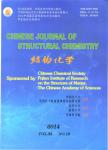Boosting hydrogen production of ammonia decomposition via the construction of metal-oxide interfaces
作者机构:National Engineering Research Center for Chemical Fertilizer Catalyst(NERC-CFC)School of Chemical EngineeringFuzhou UniversityFuzhou350002China National Engineering Research Center for Chemical Fertilizer Catalyst(NERC-CFC)School of Chemical EngineeringFuzhou UniversityFuzhou350002China Qingyuan Innovation LaboratoryQuanzhouFujian362801China
出 版 物:《结构化学》 (Chinese Journal of Structural Chemistry)
年 卷 期:2024年第43卷第2期
页 面:49-59页
核心收录:
基 金:supported by the National Key R&D Program of China 国家自然科学基金 国家自然科学基金 福建省自然科学基金 the Talent Program of Fuzhou University
主 题:Metal-support interaction Ammonia decomposition Nickel Cerium oxide Metal-oxide interfaces
摘 要:The ammonia decomposition for the production of carbon-free hydrogen has triggered great attention yet still remains challenging due to its sluggish kinetics,posting the importance of precise design of efficient catalysts for ammonia decomposition under low *** the metal-support interaction and interface is one of the most important strategies for promoting *** this work,by coating ceria onto the Ni nanoparticles(NPs),we discover that the Ni-CeO2 interfaces create an exceptional effect to enhance the catalytic decomposition of ammonia by over 10 folds,compared with the pristine *** kinetic analysis demonstrates that the recombinative N2 desorption is the rate-determining step(RDS)and the Ni-CeO2 interface greatly increases the *** on these understandings,a strategy to fabricate the Ni/CeO2 catalyst with abundant Ni-Ce-O in-terfaces via one-pot sol-gel method was employed(hereafter denoted to s-Ni/CeC2).The s-Ni/CeO2 catalyst shows a high activity for ammonia decomposition,achieving a H2 formation rate of 10.5 mmol gcat1 min-1 at 550 ℃.Combined with a series of characterizations,the relationship between the catalyst structure and the performance was investigated for further understanding the effect of metal-oxide interfaces.



